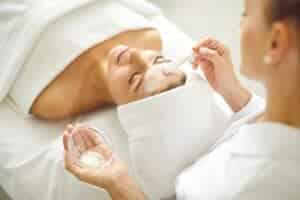 Facial treatments are a comprehensive approach to skin care, combining cleansing, exfoliation, hydration, and relaxation to promote healthier, glowing skin. These treatments remove impurities, unclog pores, and address specific skin concerns, leaving the skin refreshed and revitalized. Regular facials are an essential part of maintaining a vibrant and youthful complexion, helping to address skin concerns while promoting relaxation. Here at Cool Springs Plastic Surgery, our professionals offer facial treatments designed to enhance skin health and provide a rejuvenating experience.
Facial treatments are a comprehensive approach to skin care, combining cleansing, exfoliation, hydration, and relaxation to promote healthier, glowing skin. These treatments remove impurities, unclog pores, and address specific skin concerns, leaving the skin refreshed and revitalized. Regular facials are an essential part of maintaining a vibrant and youthful complexion, helping to address skin concerns while promoting relaxation. Here at Cool Springs Plastic Surgery, our professionals offer facial treatments designed to enhance skin health and provide a rejuvenating experience.
Facials are suitable for all skin types and ages, providing benefits for anyone seeking healthier, more radiant skin. Regular treatments can address specific concerns such as dullness, acne, fine lines, and dryness while contributing to overall skin health.
Facial treatments at Cool Springs Plastic Surgery are tailored to each patient’s unique skin type and concerns. Whether addressing acne, aging, dryness, or uneven texture, our licensed estheticians create a personalized plan to ensure optimal results. Treatments are customized for oily, dry, sensitive, and combination skin, providing solutions that promote long-term skin health.
Facials at Cool Springs Plastic Surgery follow a series of steps to maximize results:
Pairing facials with additional treatments can amplify results:
Here at Cool Springs Plastic Surgery, our licensed estheticians are dedicated to delivering exceptional care with proven techniques and customized solutions. With years of expertise, a commitment to safety, and a focus on patient satisfaction, we ensure every treatment supports long-term skin health and rejuvenation.
Discover the benefits of professional facial treatments and see why Cool Springs Plastic Surgery is the trusted choice for skin care in Nashville, Mount Juliet, and Franklin. Call (615) 771-7718 today to schedule a consultation and take the first step toward radiant, refreshed skin.
I had consulted with several doctors – and after consulting with Dr. Moore – I felt comfortable with them as a team. Everyone was helpful, encouraging, and supportive. Those attitudes are so important to your recovery.
– JV